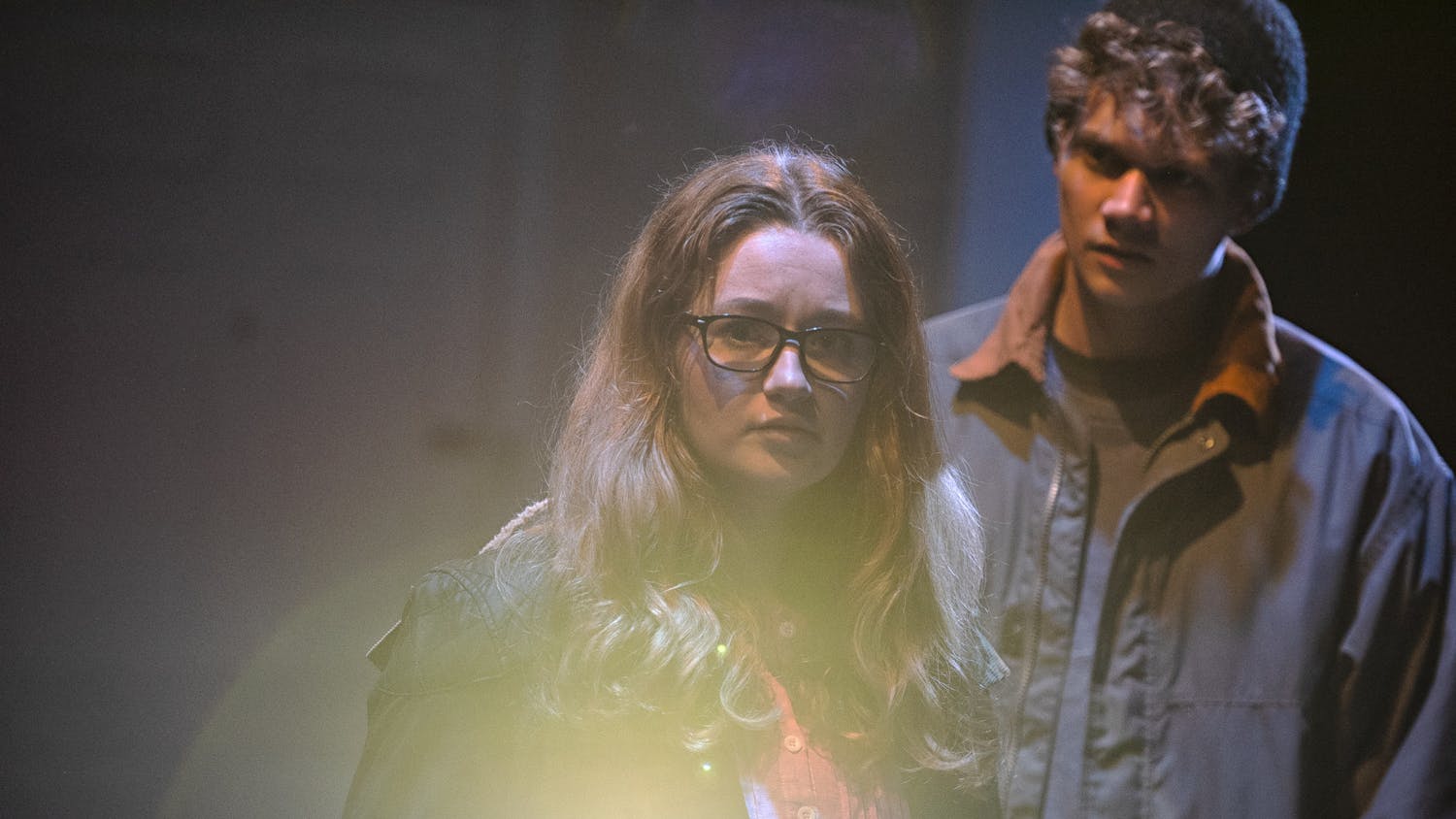The scenes read in “The Incredible Dramatic Life of Science and Mathematics” opened windows of collaboration between theatre and mathematics, illustrating a relatively new tradition that has captivated audiences the world over.
In 1997, while directing a performance of “Arcadia,” Professor of Theater and Women and Gender Studies Cheryl Faraone contacted Professor of Mathematics Steve Abbott to help her and her students through the math-heavy content of the play.
This collaboration blossomed first into a winter term course and quickly into regular term course on the interplay of science and mathematics that has begun to emerge in modern theater.
This past Sunday, the 30th, Abbott, Faraone and five of their past students presented readings of scenes from three plays that exemplify this new science theater, the first of which was “Arcadia,” a 1993 play by the playwright Tom Stoppard.
The performance had an informal tone, with question-and-answer and audience interaction, in between each of the scenes. Questions addressed both the artistic and the scientific, sometimes asking to elucidate a mathematical theory, other times addressing the underlying themes and tones of the pieces.
“Arcadia” takes place across two moments in time: a modern story of three researchers and the intersections of their research and a story set in 1809, centered around Thomasina, a teenage girl who proves to be much ahead of her time in the field of mathematics.
Stoppard beautifully interweaves these stories, set in the same house nearly 200 years apart.
The first scene read on Sunday took place in the past — an interaction between Thomasina and her tutor, Septimus Hodge.
As Thomasina challenges Hodge’s methods, she asks a question that hung over the rest of the performance, both of “Arcadia” and the two other plays.
“If there is an equation for a bell, should there be one for a blue bell? And what of a rose? Should we think nature is written in numbers?”
Thomasina is outlining a field of mathematics that would not come until over 100 years after her death and a field of particular interest of one of the modern characters in the play: chaos theory, the study of dynamical systems or the popular notion of the butterfly effect.
Abbott commented on the “nature” of chaos theory during the question and answer.
“... The endless lines in leaves and the fuzzy edges of clouds, there’s nothing in Euclid that will describe that for you,” said Abbott. “It’s the mathematics of fractals and chaos theory that unlock those pictures.”
In these two scenes, we see a strong overlap between the unfolding mathematics and the unfolding relationships between the characters, both past and present.
The second scene read on Sunday brought both time periods to the stage.
Orbiting the same table and the same notebook of Thomasina, the two points in time engage in a coincidental back-and-forth.
With the advantage of modern computers, the characters of the present are able to run Thomasina’s equations further than Thomasina ever could on paper, revealing the beauty of fractals and merging past and present both on stage and in metaphor.
Next, the performers took scenes from two other plays, Snoo Wilson’s “Love Song of the Electric Bear” and “A Disappearing Number,” a play devised by the Théatre de Complicité.
In “Love Song,” Parker Woodworth ’14 played the part of Alan Turing, commonly considered the father of the field of computer science.
A known eccentric, Turing often carried a teddy bear named Porgy who was anthropomorphized on stage in Wilson’s play.
Through the performance of Porgy, the audience is able to dive deeper into Turing’s troubled psyche as well as understand the inspiration for much of his work.
Though Turing did not design the first computer, his theoretical research was essential for its development. In the later part of his life, most of Turing’s time was spent researching and pondering artificial intelligence and its potential impact on technology and our humanity.
It is often said that it is his relationship with this bear that led him to consider what he called “artificial brains.”
“A Disappearing Mind” revolves around the relationship between G.H. Hardy and Srinivasa Ramanujan, two early 20th century mathematicians.
“It is not really a biographical play,” Faraone said at its opening. “It was written and performed by a physical theater company, as it is as much about the motion of the characters as it is about the text.”
“A mathematician,” one of the characters says in the first scene, “like a painter, or poet, is a maker of patterns.”
It was the patterns of motion that pulled the audience into these scenes.
The second of three different scenes — which, like “Arcadia,” occurred across space and time — revolved around two other scenes, altering in their description of one of Ramanujan’s biggest mathematical achievements: the partition function.
In the final question and answer session, after scenes had finished, someone in the audience asked Abbott how, if at all, his work with the theater has influenced his work in mathematics.
“As an educator and an eternal student, interactions with any of the other concentrations opens up my education and how I educate others,” said Abbott.
“Whenever a mathematical concept is spoken about in a theatrical performance, this new angle of approach always deepens the mystery of these objects I thought I once understood deeply. Though, it hasn’t led me, yet, to proving any new theorems.”
The actors, too, had insight to bring after the performance.
Adam Milano ’15 made note of some of the emotions they try to bring to a monologue in which a character is explaining a concept in math.
“I have to ask myself what my character [is] trying to say with all of this and remember to use movement in my performance,” said Milano.
“Everything in theater, even material that may seem like dry mathematics, should have meaning,” he added.
“Most people don’t understand that there is a real creative side to mathematics, and often it is a point of creative insight during something like a proof that links a seemingly cold and rigid question to a similarly rigid answer,” said Woodworth. a math major.
Dramatic Performance Partners Art and Science
Comments



